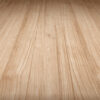How is Composite Decking Made?
 ouseWhile many people know and understand that when it comes to decking, composite is king. Many may not know how it is made. In this blog, we take a closer look into the production of composite decking and exactly what it takes to create the boards considered to be the gold standard of the decking world.
ouseWhile many people know and understand that when it comes to decking, composite is king. Many may not know how it is made. In this blog, we take a closer look into the production of composite decking and exactly what it takes to create the boards considered to be the gold standard of the decking world.
Table of Contents
What’s in composite decking
As you may have guessed from its name, composite decking is a mixture of more than one material. Where regular decking boards such as hardwood and softwood are made up of one single wood material, composite decking is produced using a mixture of real hardwood fibres and polymer resin. Combining to create a flooring product that offers the best of both wood and plastic decking, providing high resistance to stains, fade and abrasions, superior strength underfoot and long-lasting capabilities.
The manufacturing process of composite decking
A huge misconception that is often associated with composite decking is that it is bad for the environment as a result of it containing plastics. However, in reality, this just isn’t true. Many composite decking manufacturers use raw materials in the production process, with any waste being recycled back in. So there is the maximum value in the materials they use with the absolute minimum of waste.
The hardwood powder that is used is made up of recycled fibre fillers and sawdust with reclaimed wood that would otherwise go into landfills. Other ingredients included in the manufacturing process include foaming agents, lubricants and colouring, which all work to ensure the finished composite board not only looks incredible but perform just as well.
Once these ingredients have all been combined, they are then moved through a mould and ‘extruded’ into the desired shape. To create an organic and natural aesthetic that mimics the likeness of wood decking, the composite boards are put through a variety of specific processes. The type of processes used will depend on whether the final board will be ‘capped’ or ‘uncapped’, which is a protective polymer layer that is wrapped around a number of the sides of the board.
The first of the two processes in one we have already mentioned, which is called extrusion. This method creates one long composite deck board on a conveyor belt that can be cut down to the required lengths later. The second manufacturing process is called compression moulding, which consists of a combination of materials being placed on a wood grain mould and compressed under extreme pressure and heat. This leads to a physical bond that gives the board its shape.
Composite decking boards
One of the great things about composite decking is the variety of styles, designs and colours that are available to choose from, including grooved, ungrooved, solid, hollow, capped and uncapped. All of which are manufactured using one of the two processes explained above.
The shape and style that the finished board takes are important, as this will determine the overall cost as well as the method of installation. Solid boards are unsurprisingly more expensive due to them requiring more materials, whereas hollow boards are cheaper as a result of needed less material to produce.
Either way, composite decking provides homeowners with a fantastic flooring option, regardless of what type they choose or how they are made.









